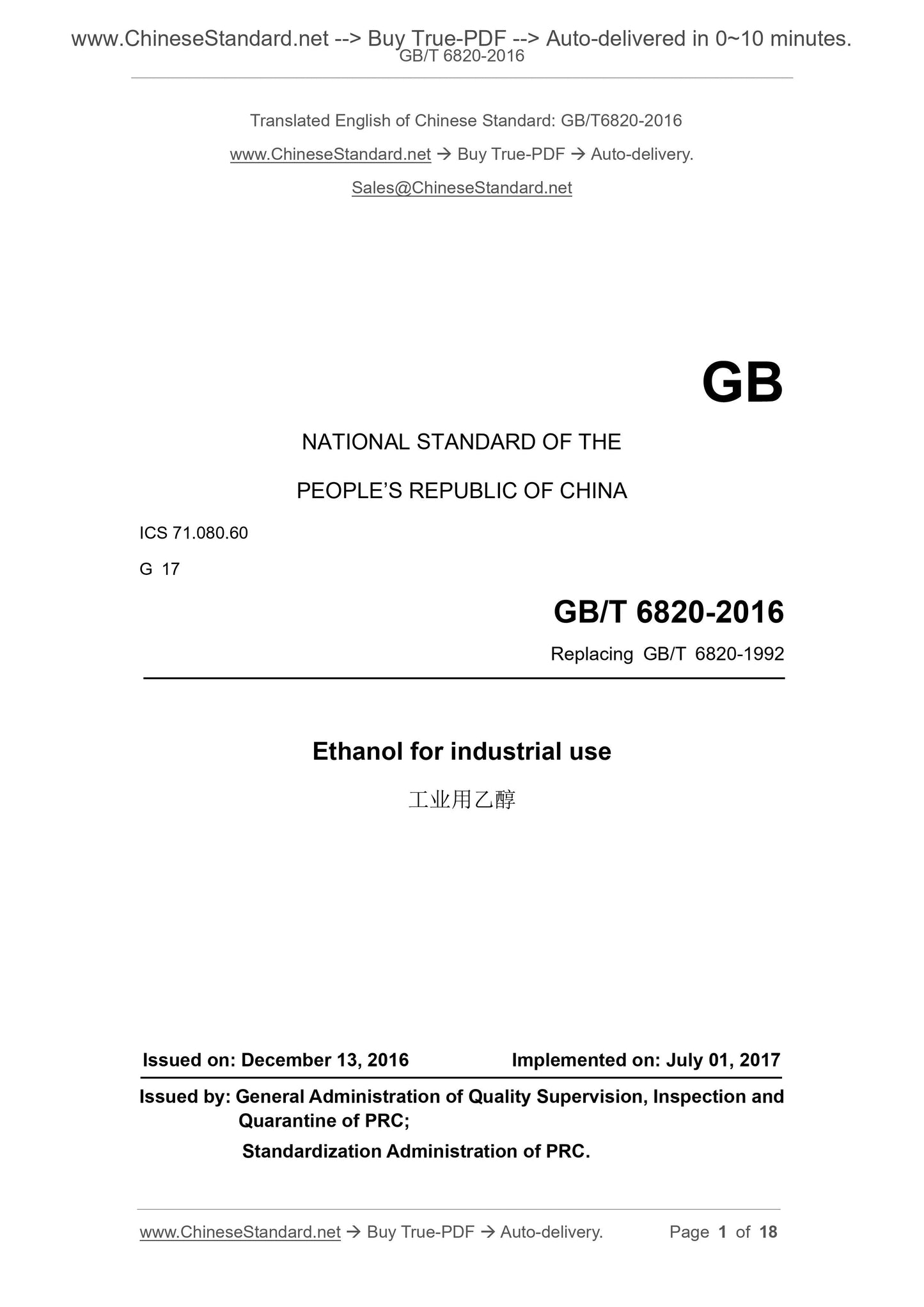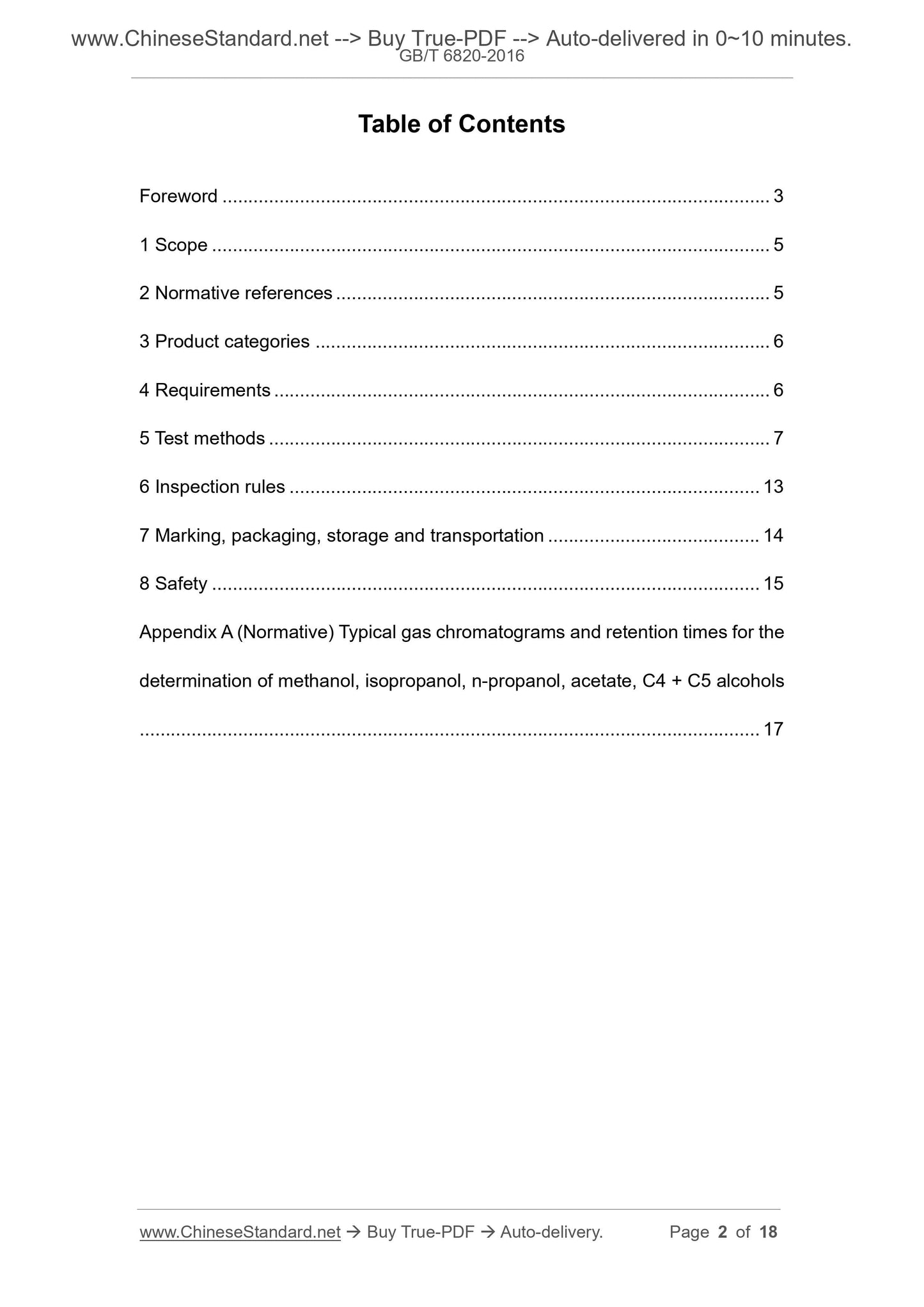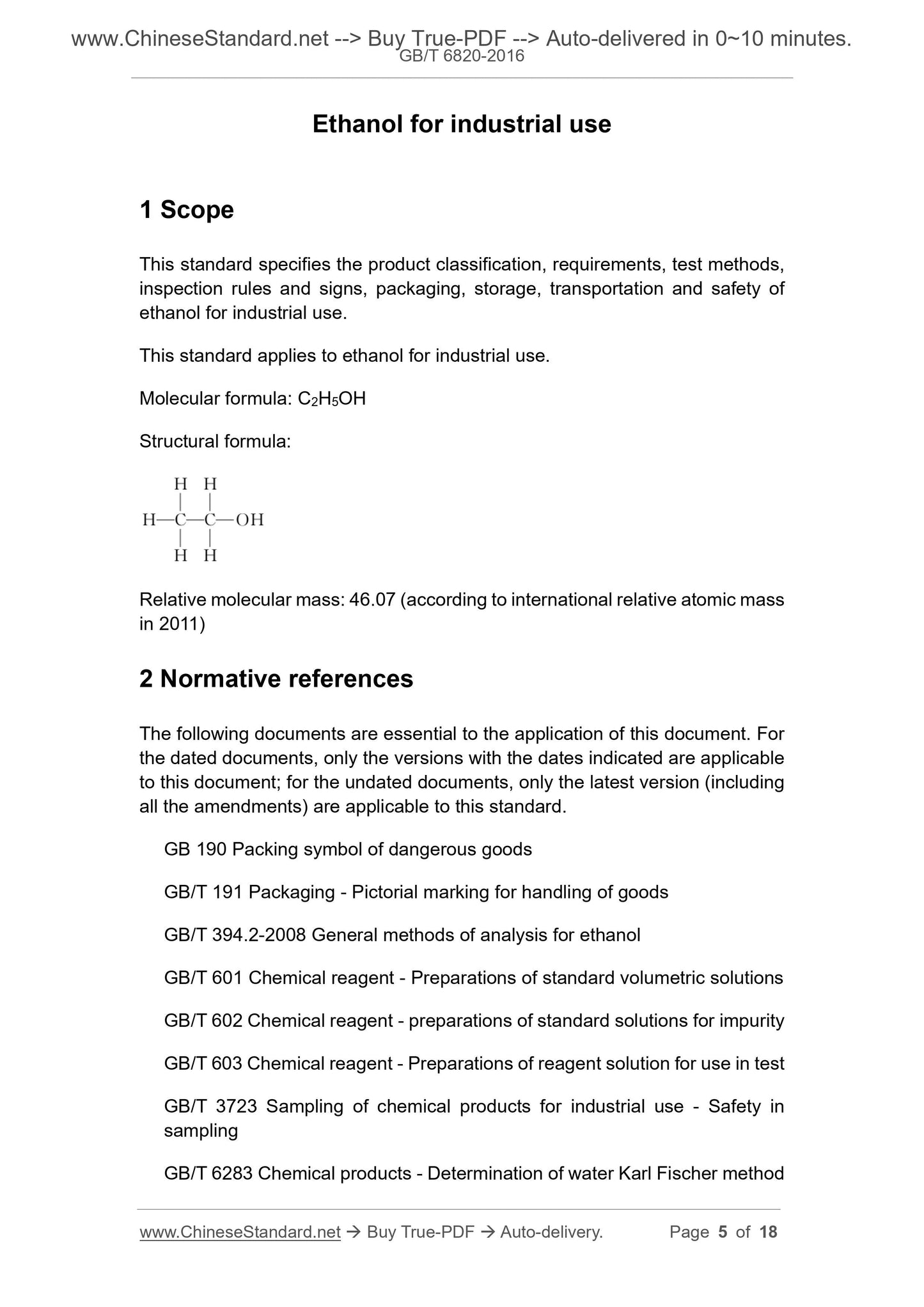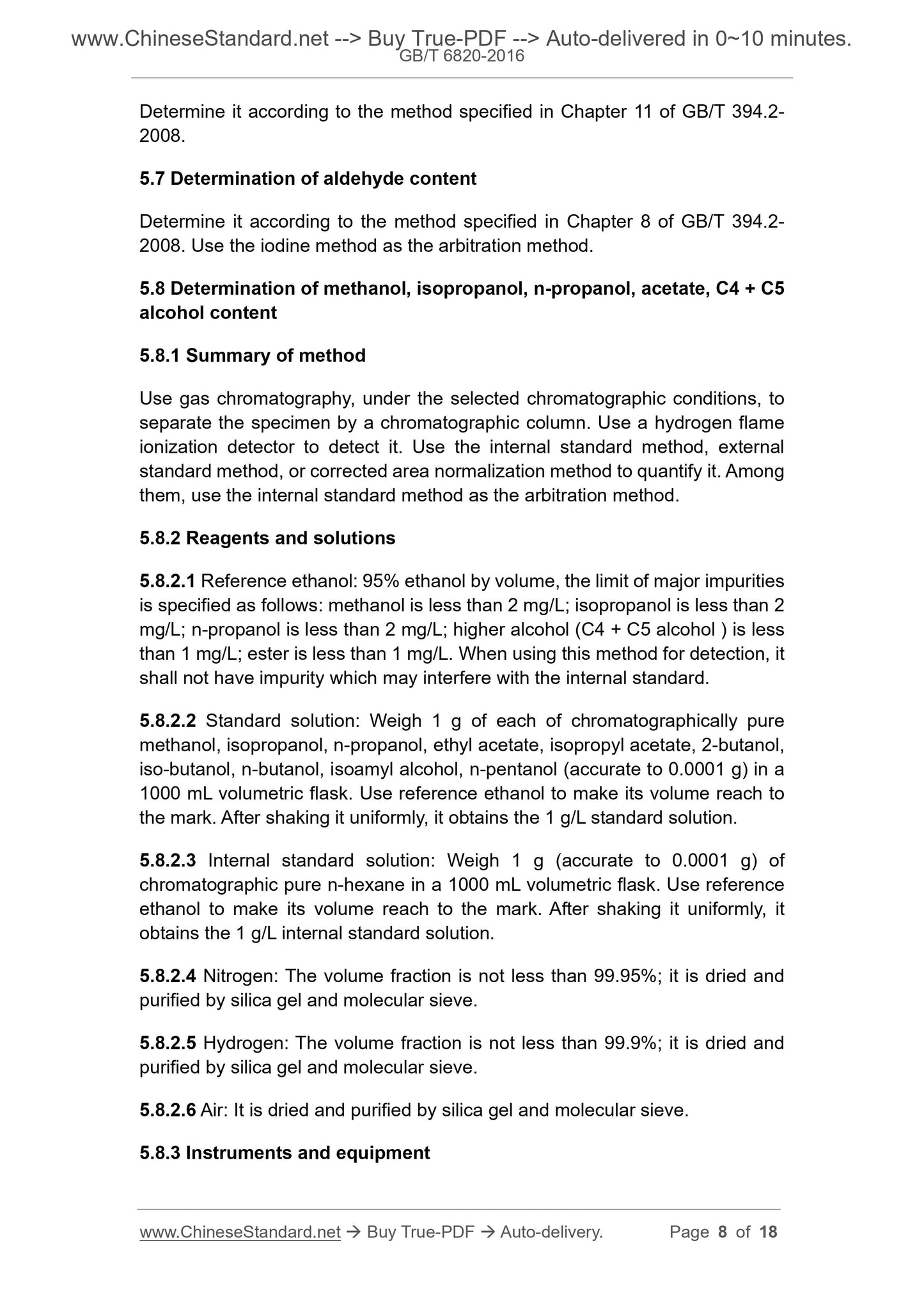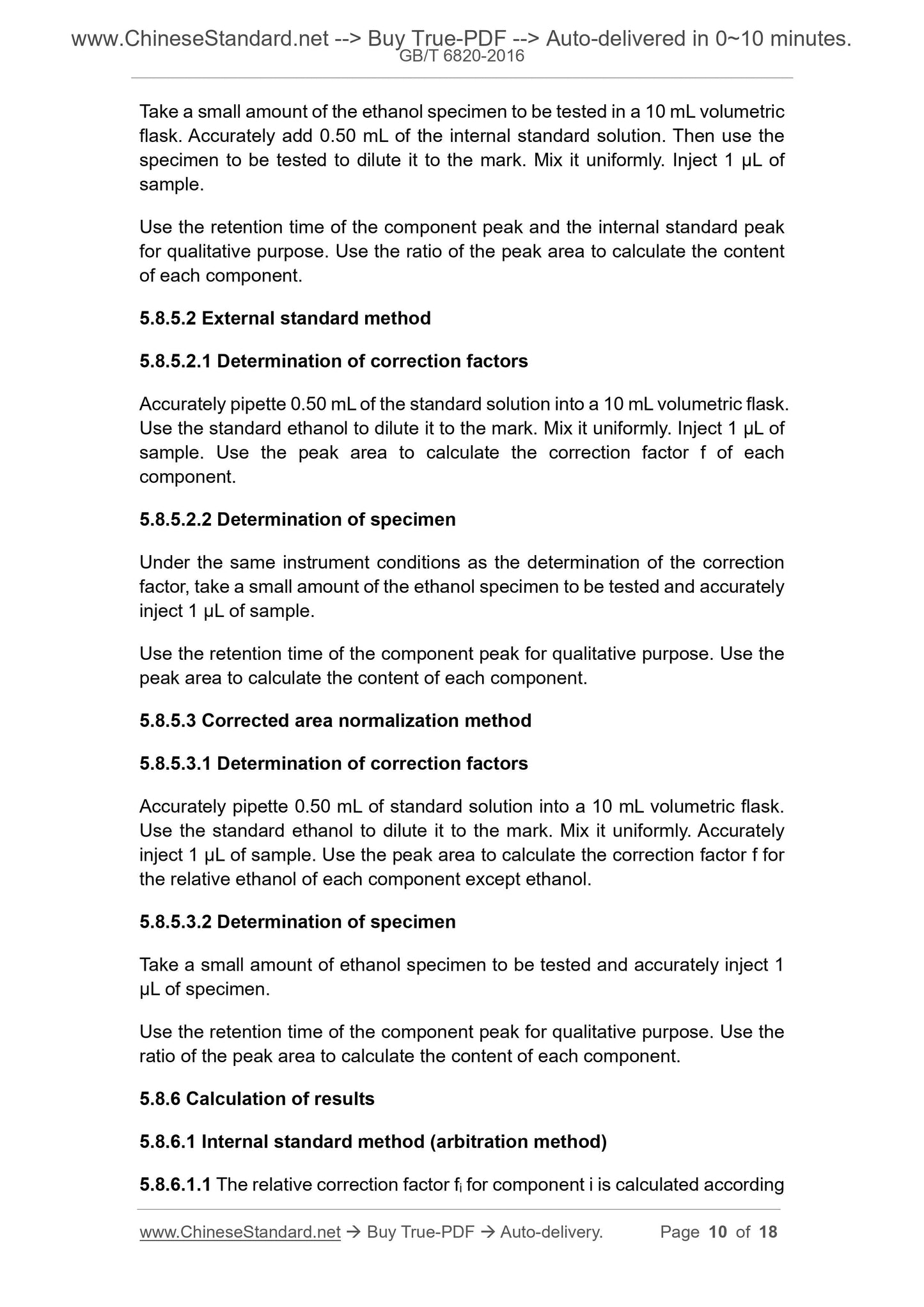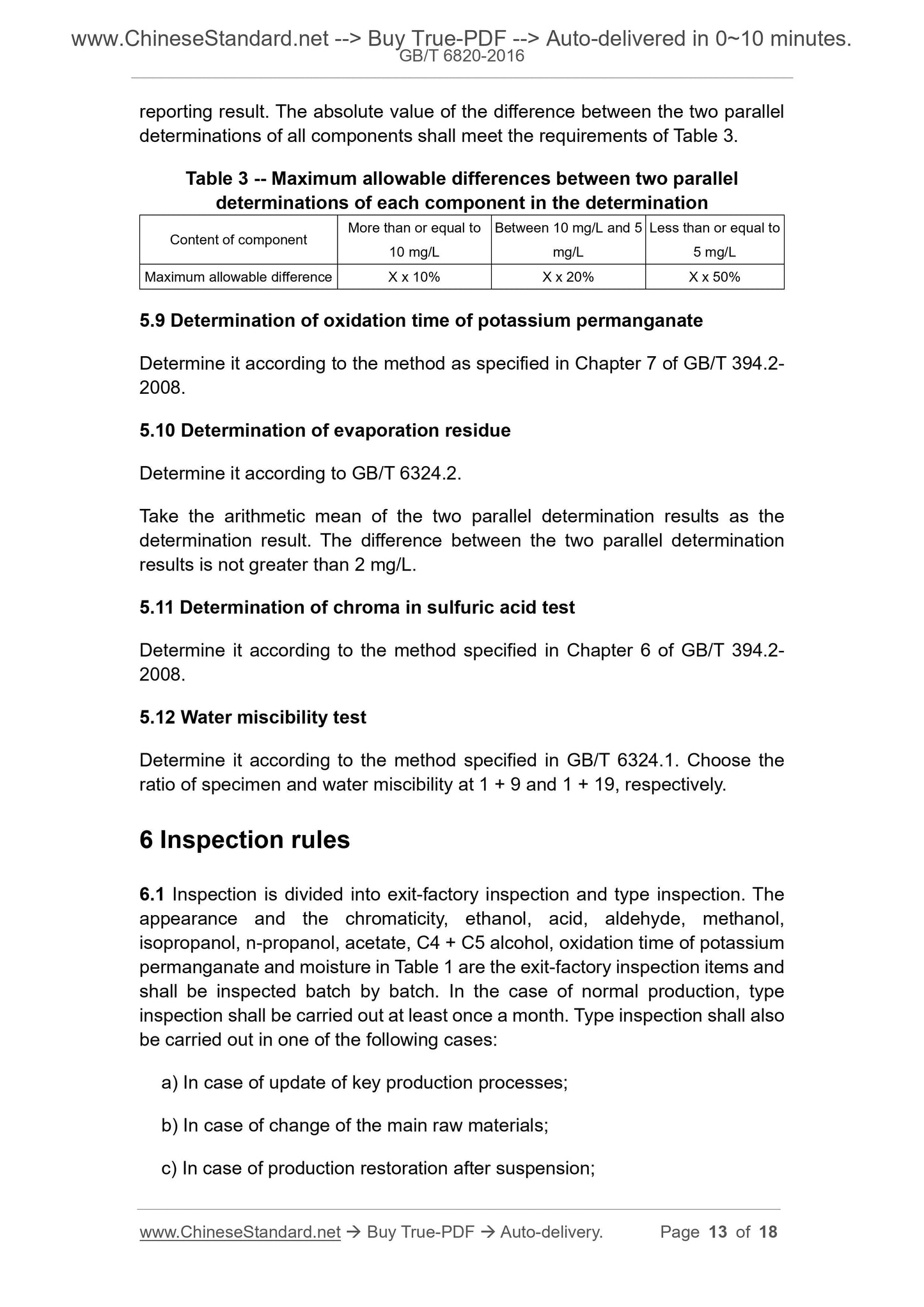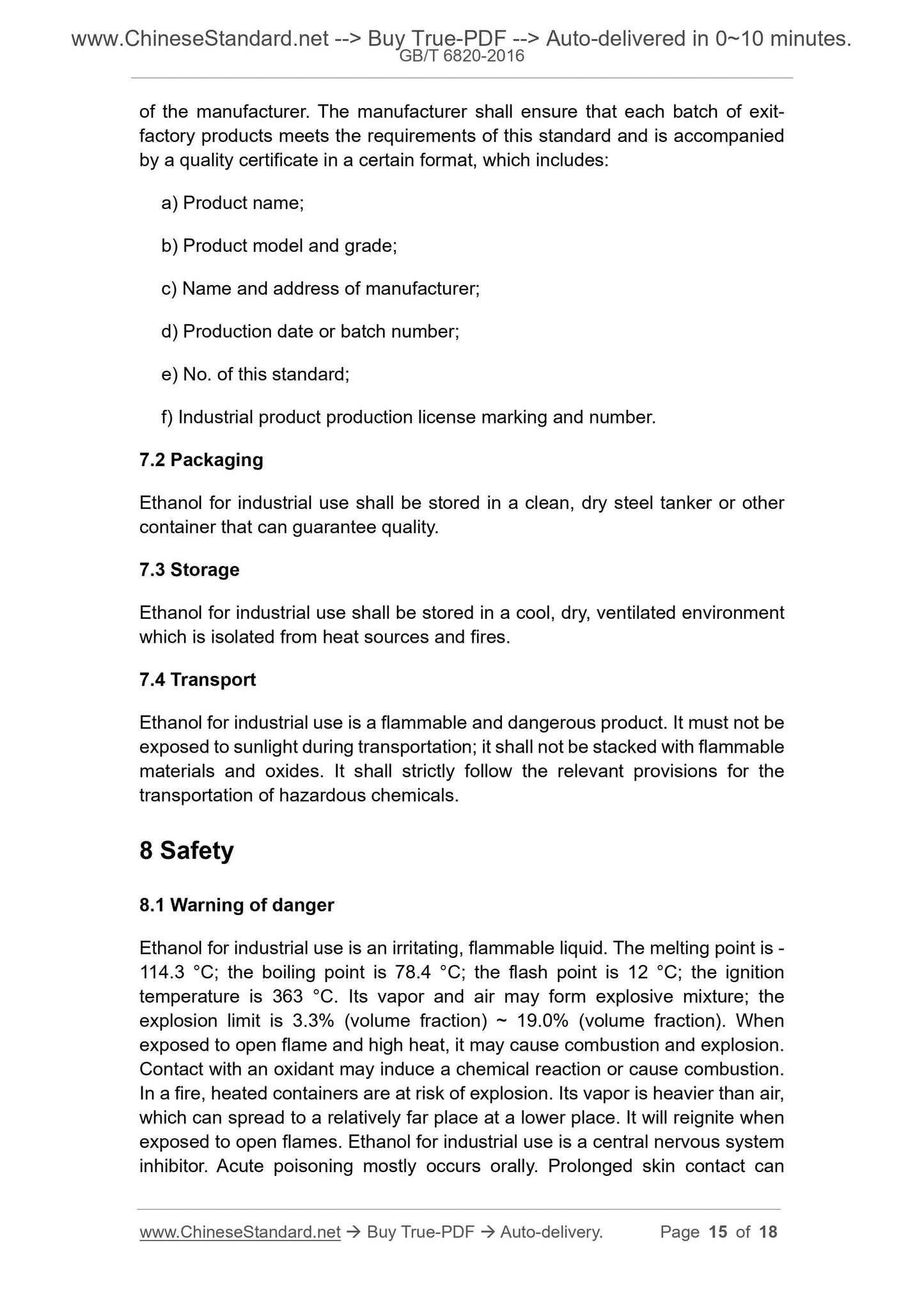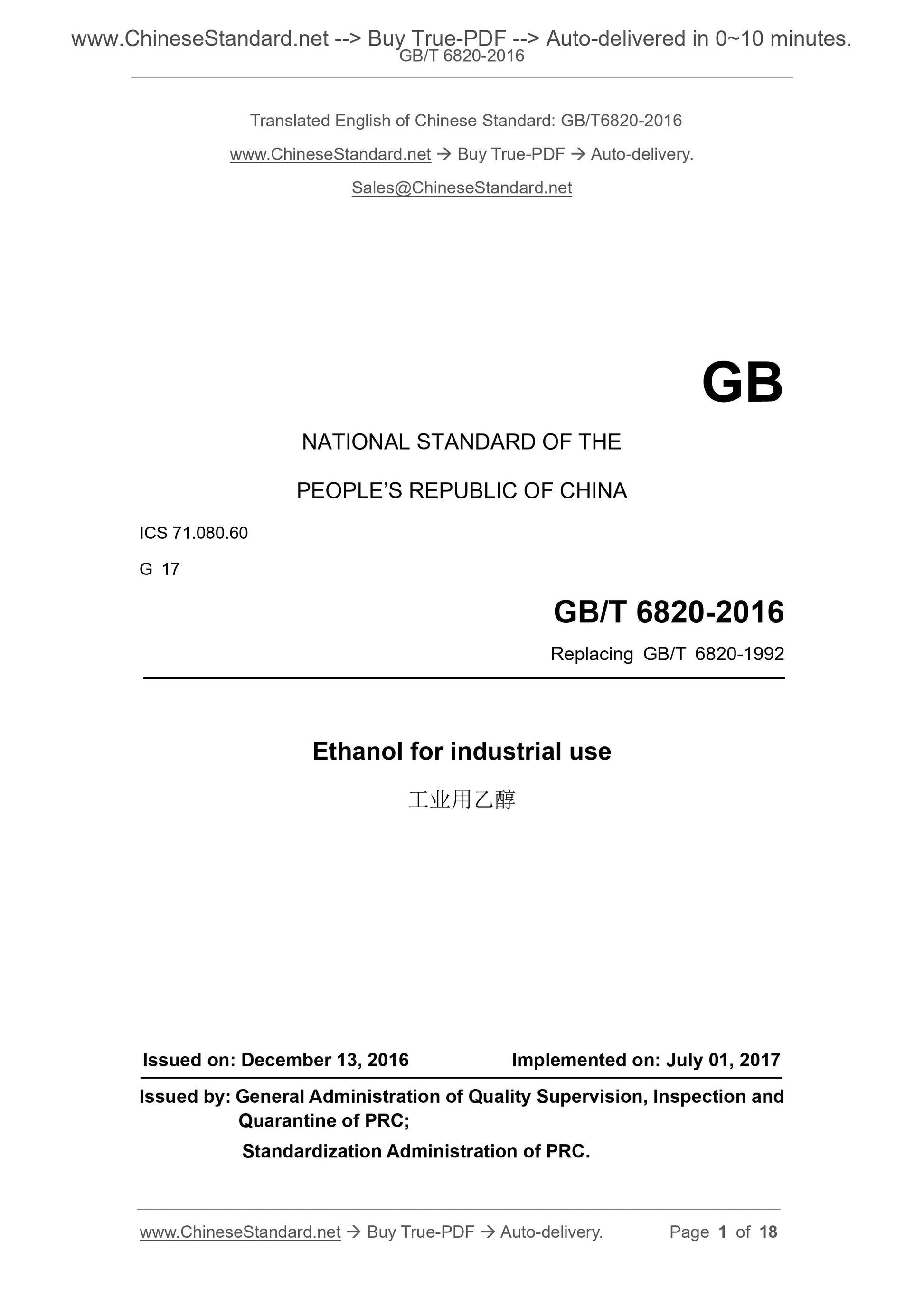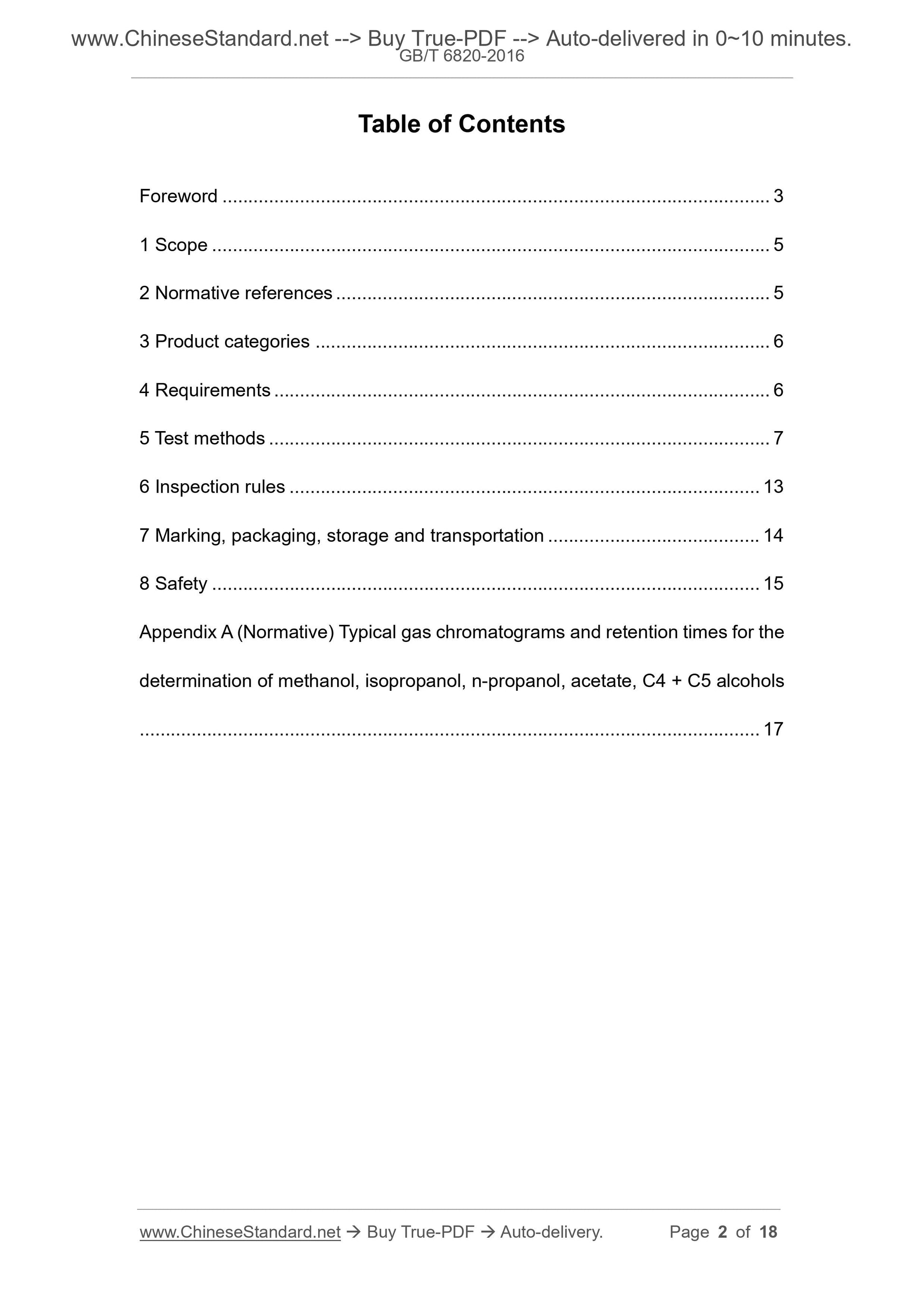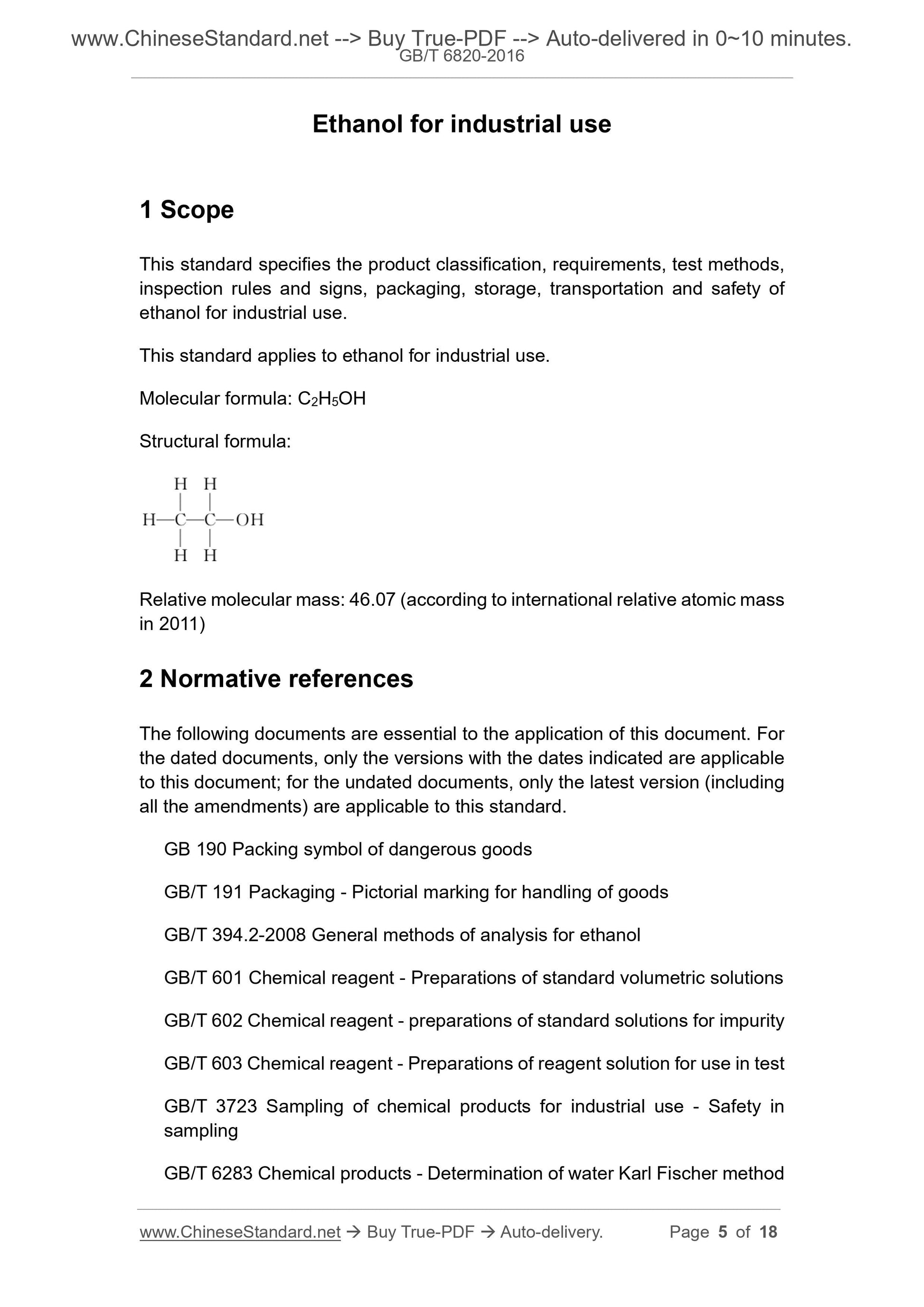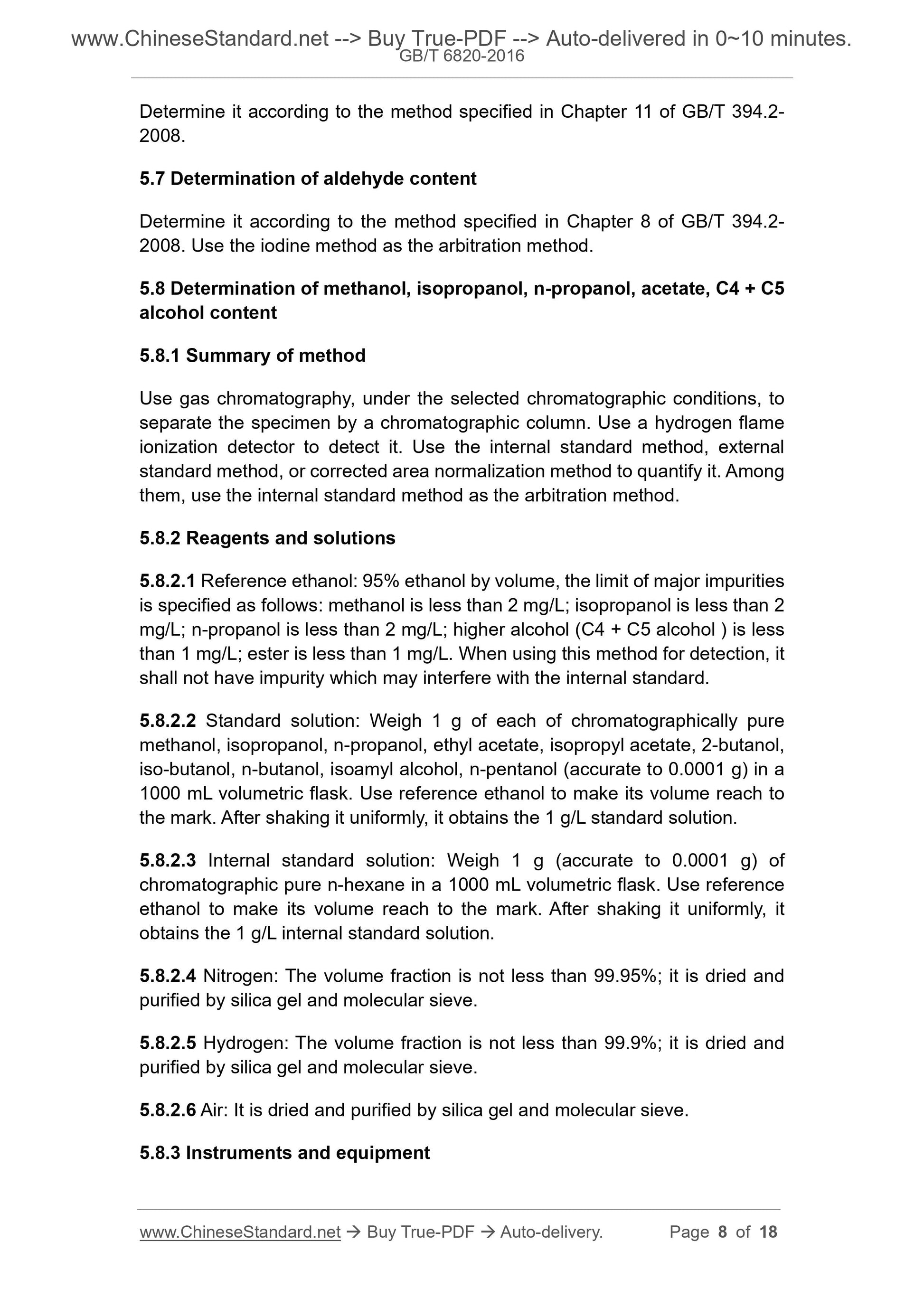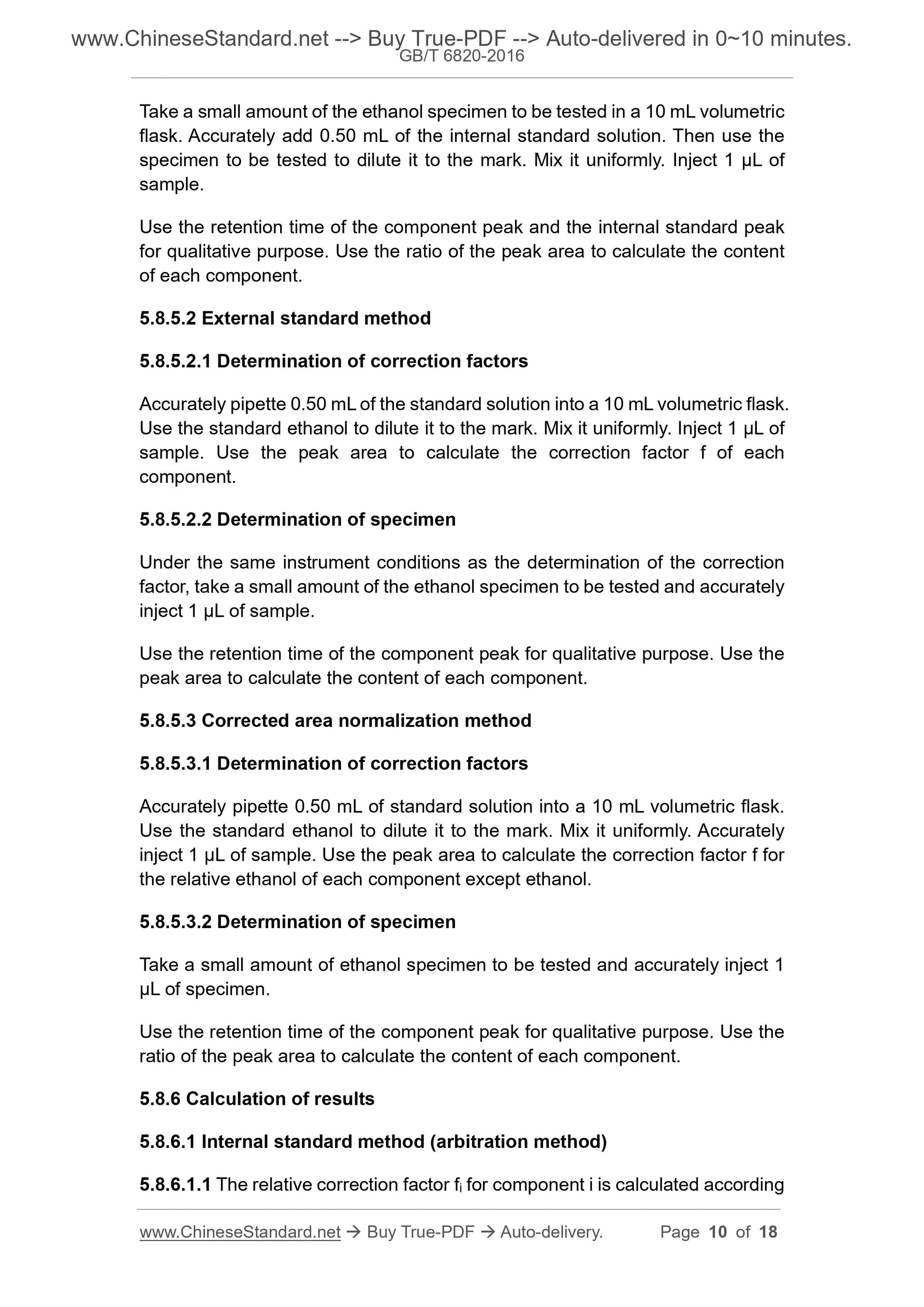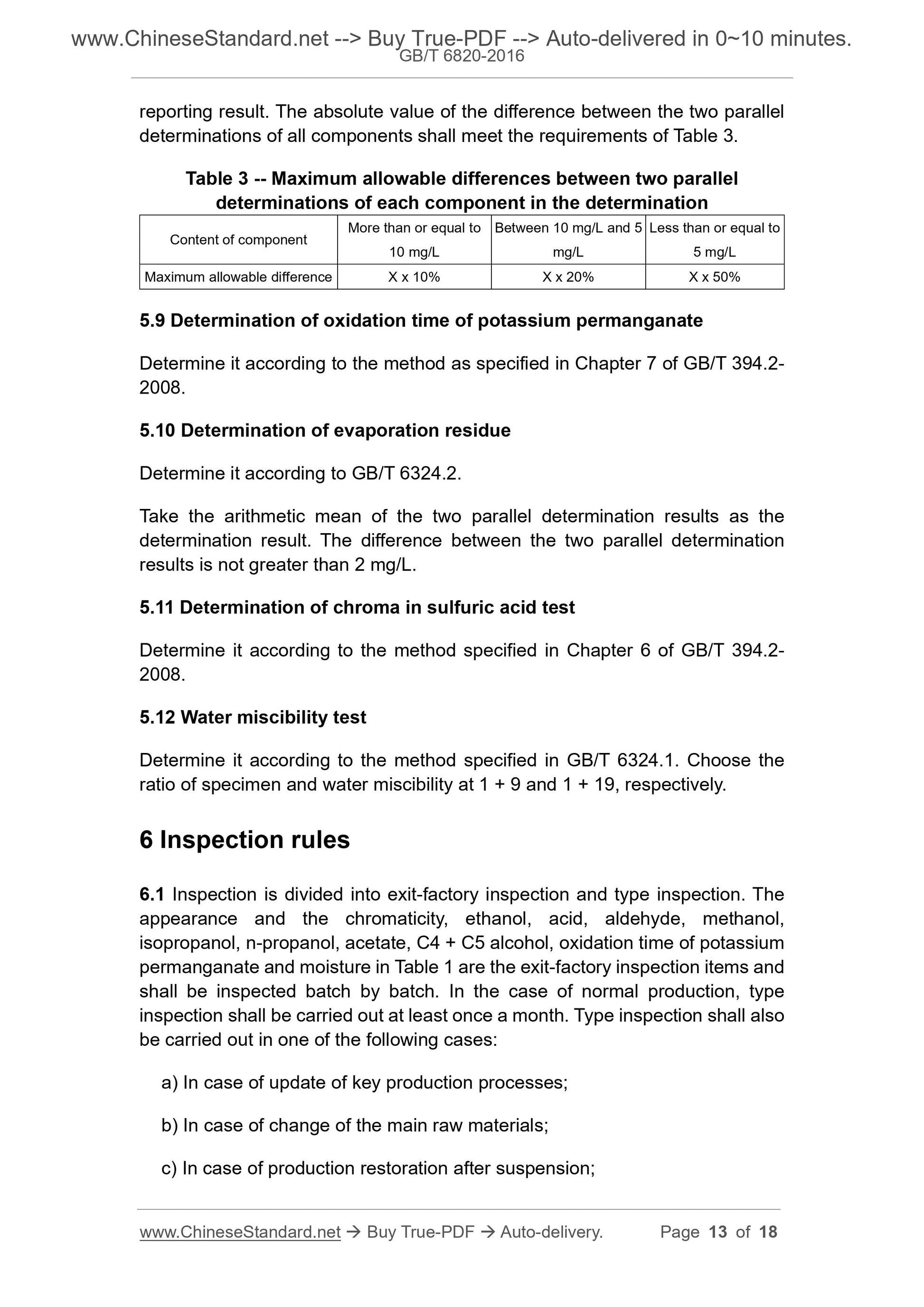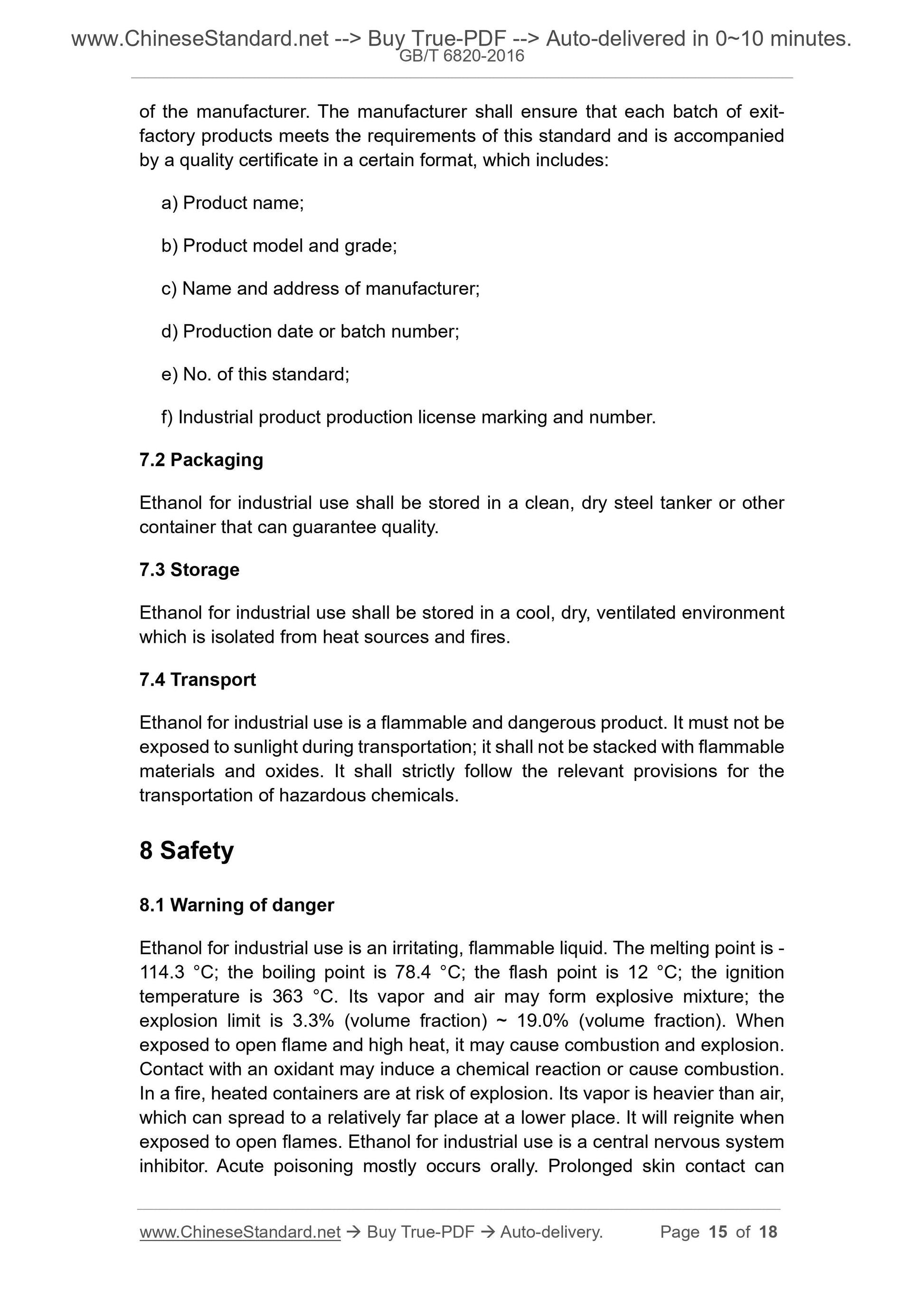1
/
of
7
www.ChineseStandard.us -- Field Test Asia Pte. Ltd.
GB/T 6820-2016 English PDF (GB/T6820-2016)
GB/T 6820-2016 English PDF (GB/T6820-2016)
Regular price
$165.00
Regular price
Sale price
$165.00
Unit price
/
per
Shipping calculated at checkout.
Couldn't load pickup availability
GB/T 6820-2016: Ethanol for industrial use
Delivery: 9 seconds. Download (and Email) true-PDF + Invoice.Get Quotation: Click GB/T 6820-2016 (Self-service in 1-minute)
Newer / historical versions: GB/T 6820-2016
Preview True-PDF
Scope
This standard specifies the product classification, requirements, test methods,inspection rules and signs, packaging, storage, transportation and safety of
ethanol for industrial use.
This standard applies to ethanol for industrial use.
Molecular formula: C2H5OH
Structural formula:
Relative molecular mass: 46.07 (according to international relative atomic mass
in 2011)
Basic Data
| Standard ID | GB/T 6820-2016 (GB/T6820-2016) |
| Description (Translated English) | Ethanol for industrial use |
| Sector / Industry | National Standard (Recommended) |
| Classification of Chinese Standard | G17 |
| Classification of International Standard | 71.080.60 |
| Word Count Estimation | 14,199 |
| Date of Issue | 2016-12-13 |
| Date of Implementation | 2017-07-01 |
| Older Standard (superseded by this standard) | GB/T 6820-1992 |
| Regulation (derived from) | National Standard Announcement No.72 of 2016 |
| Issuing agency(ies) | General Administration of Quality Supervision, Inspection and Quarantine of the People's Republic of China, Standardization Administration of the People's Republic of China |
Share
